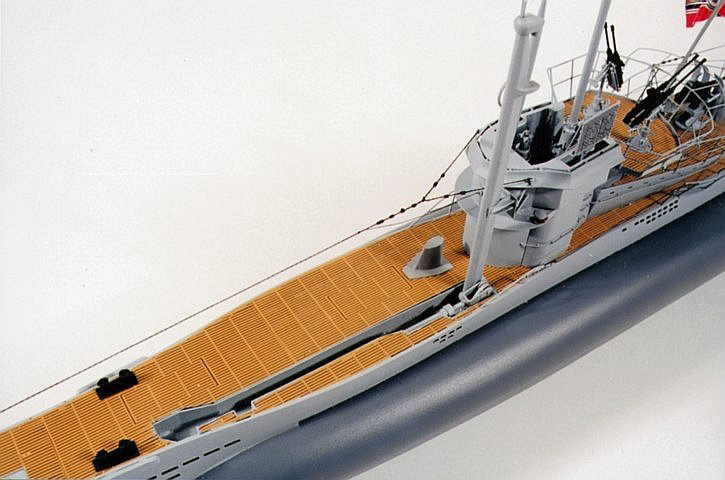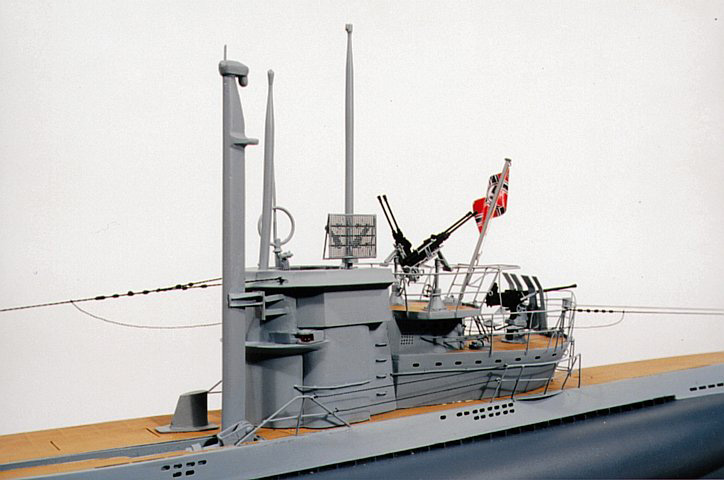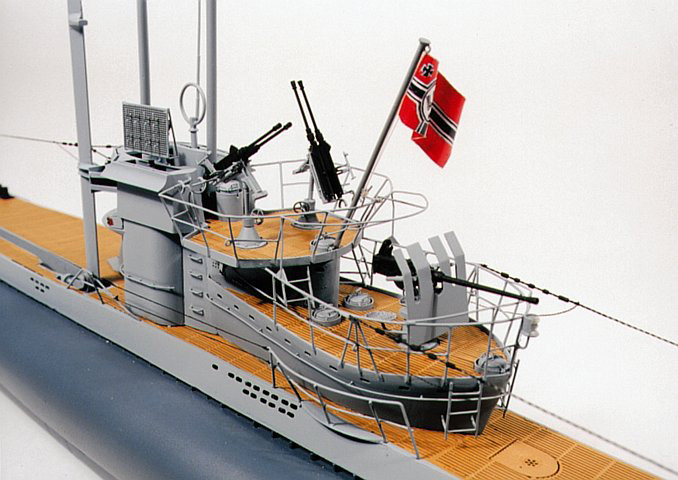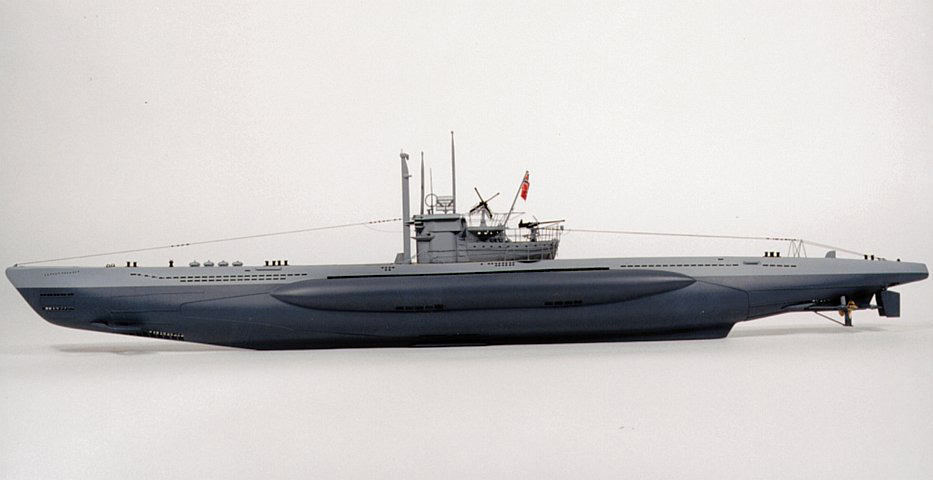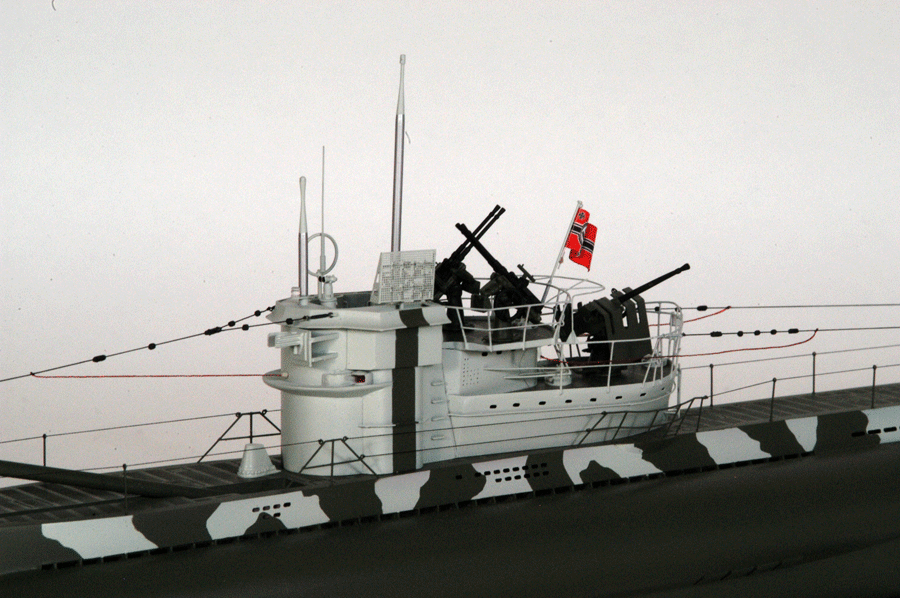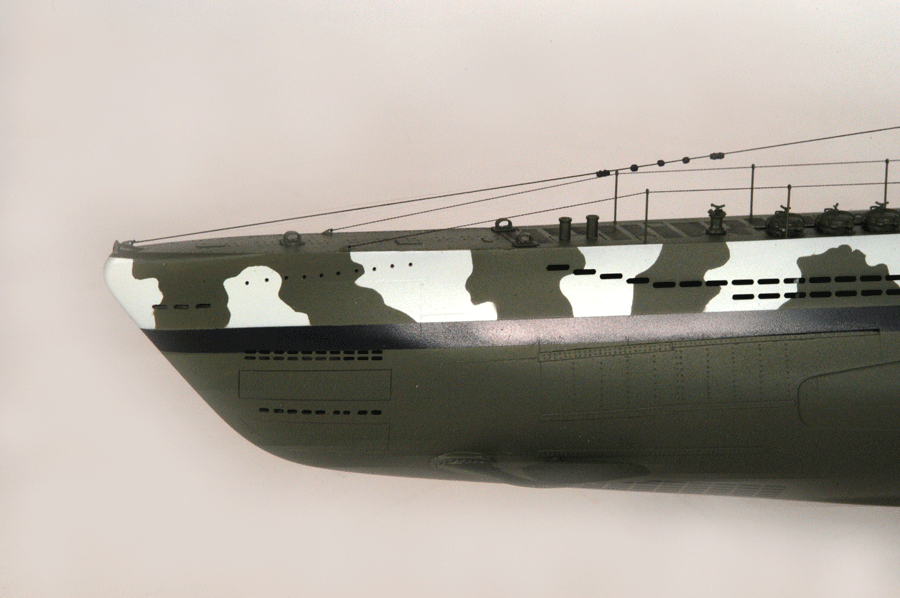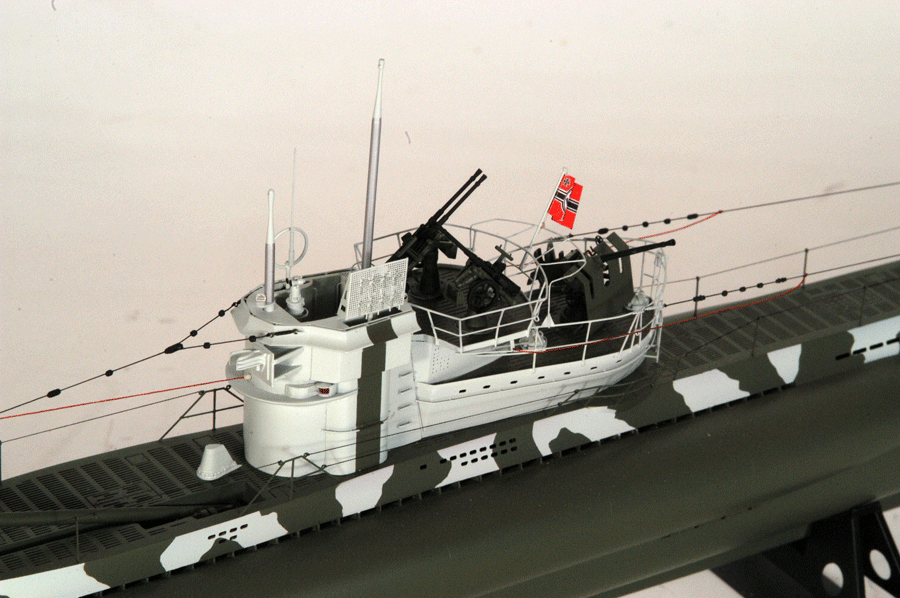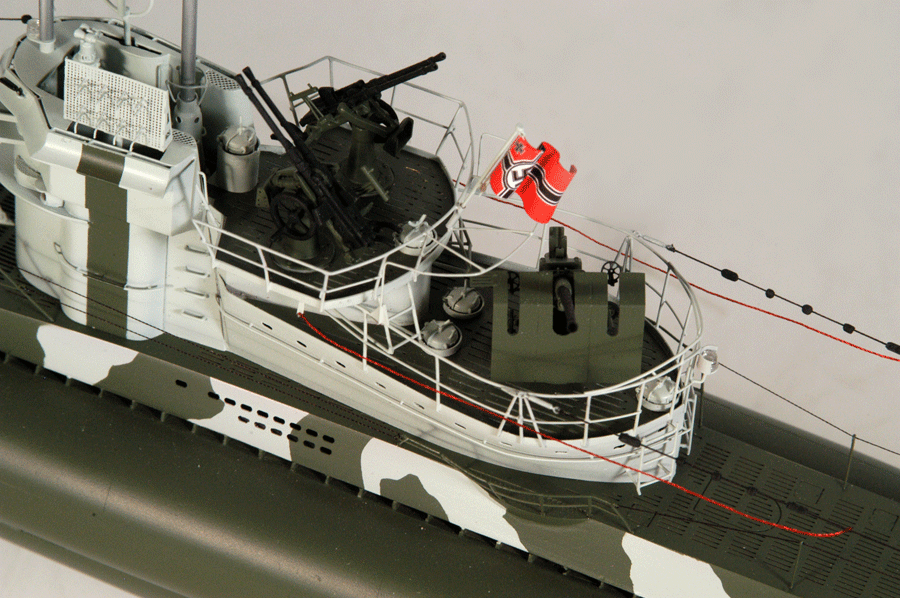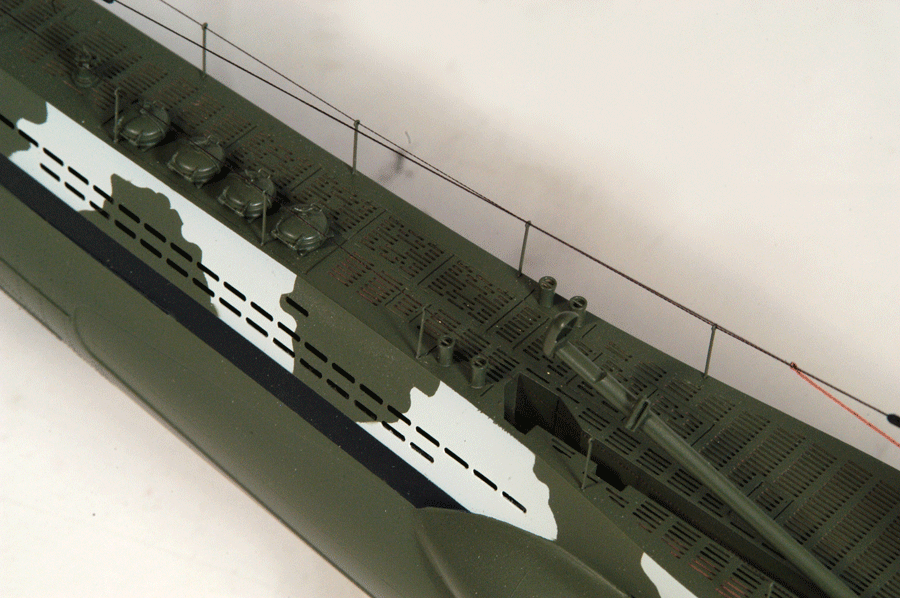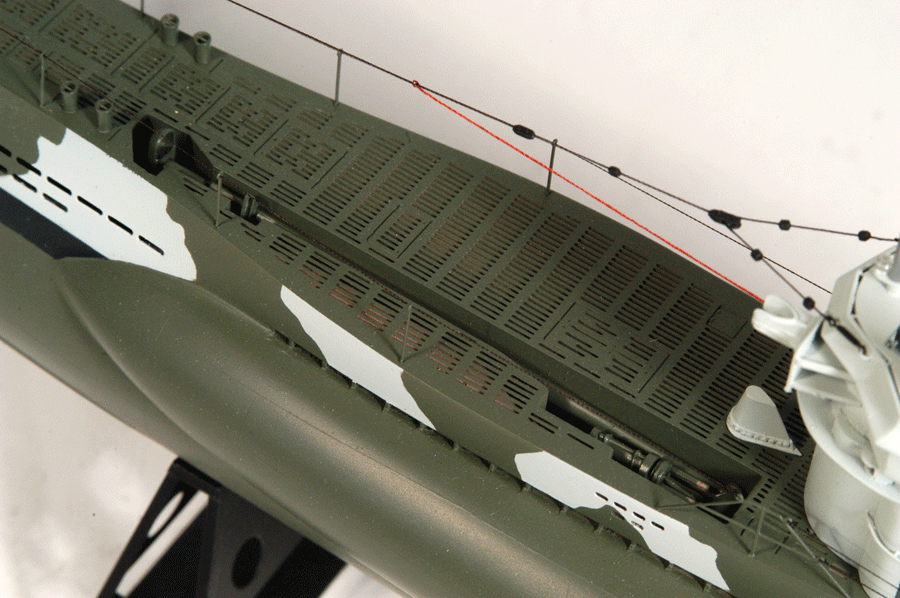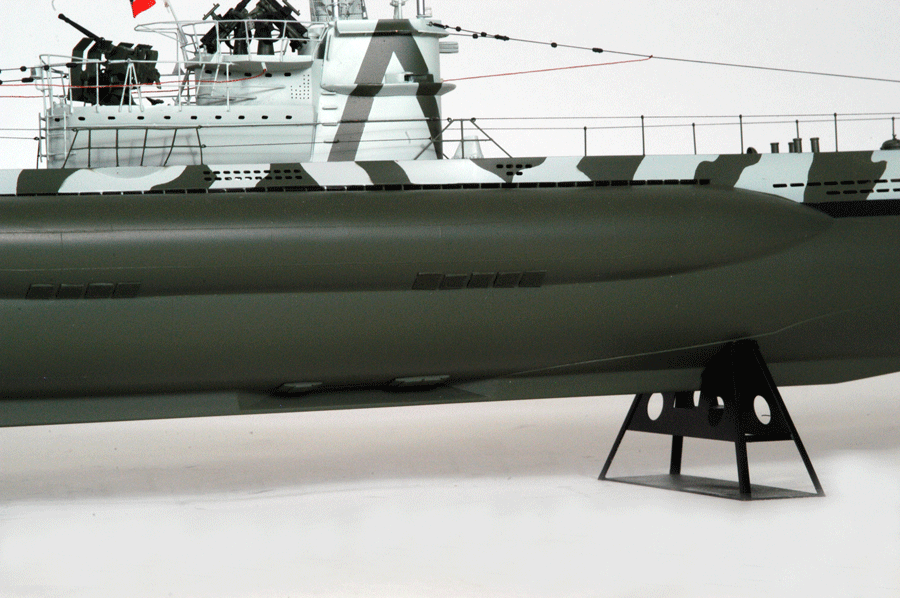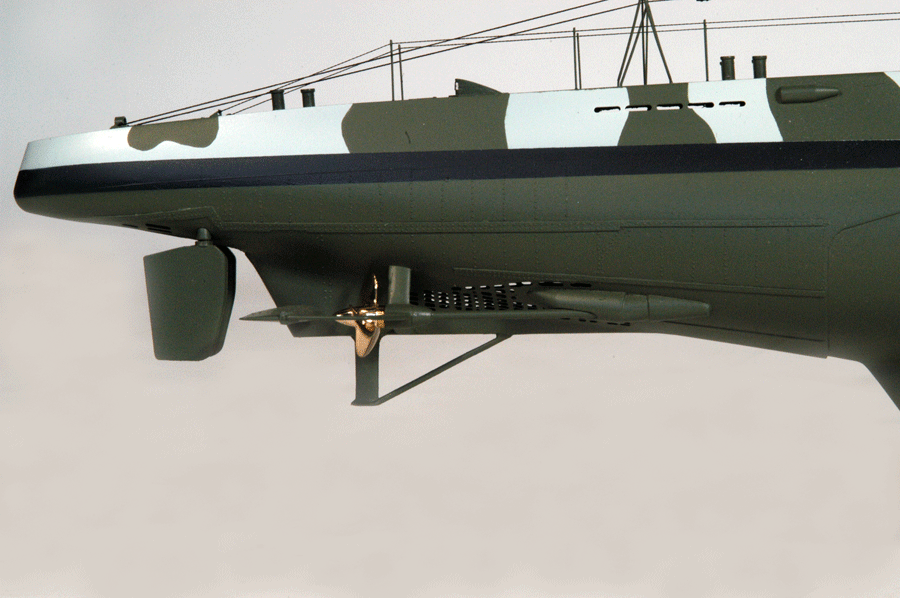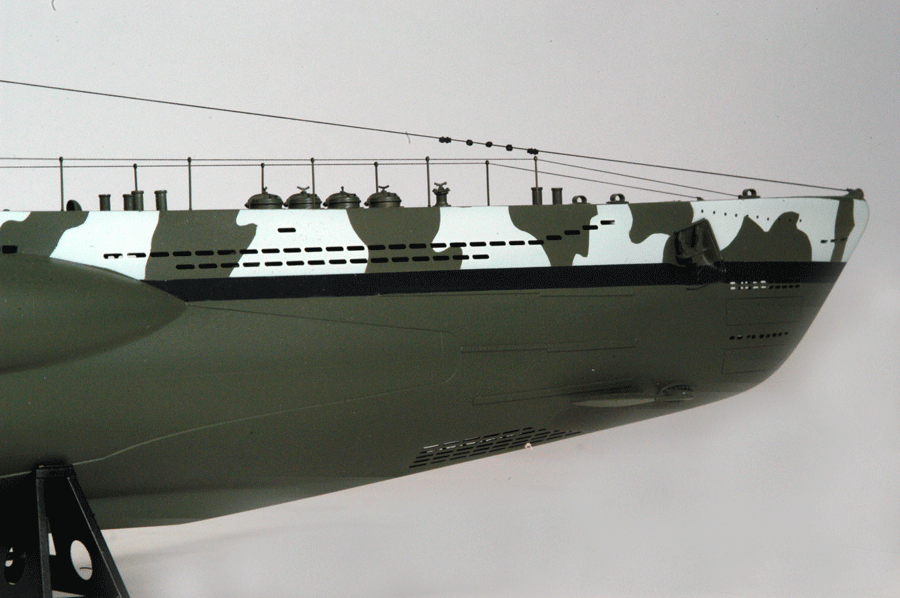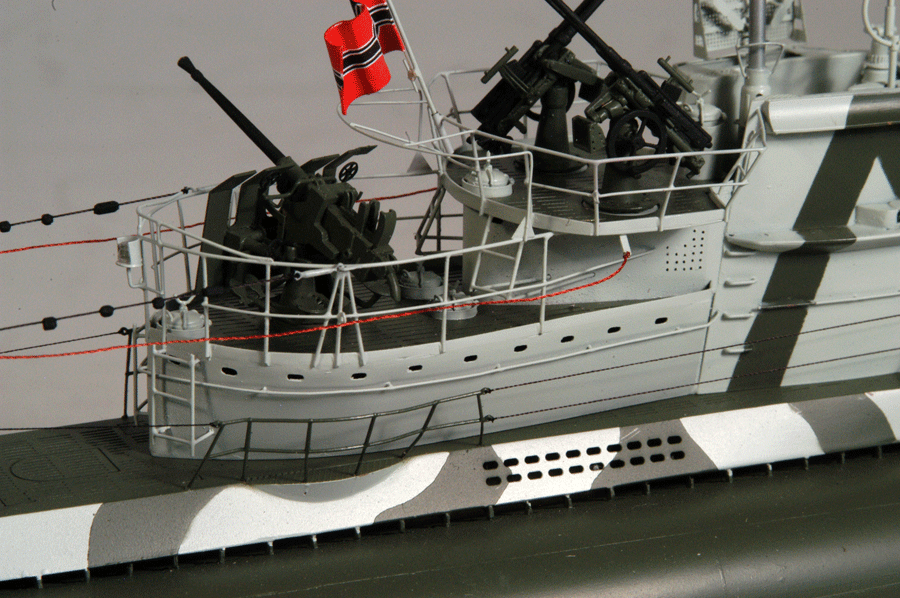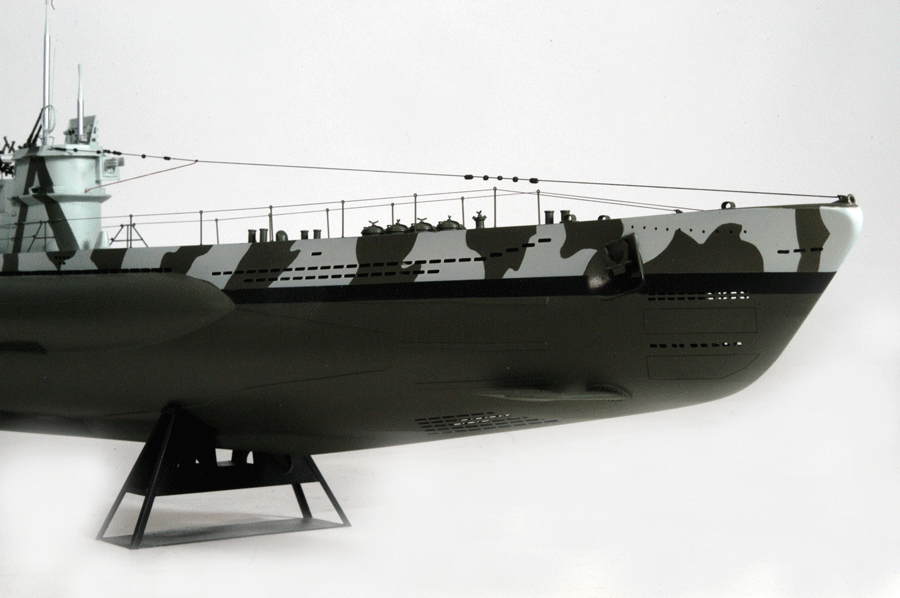U-Boat
Type VII-C U-Boat
- Scale: 1:96
- Release: 1998
- Limited Edition: 50
- Model Size: 27”L x 3”W x 8”H
- Base Type: Black Walnut
- Base/Case Size: 31”L x 6”Wx 11”H
- Availability: Sold Out
Type VII-C U-Boat – Camouflage
- Scale: 1:96
- Release: 1998
- Limited Edition: 50
- Model Size: 27”L x 3”W x 8”H
- Base Type: Black Walnut
- Base/Case Size: 31”L x 6”Wx 11”H
- Availability: Sold Out
U-Boat VII-C
The type VII U-boat formed the backbone of the German submarine fleet with a total of more than 700 boats built between 1935 and 1945. The variants, though stemming from a single basic type and retaining several common structural characteristics, differed from each other in performance and function—attack submarines VII-A, VII-B, VII-C, VII-C41, VII-C42, minelayers VII-D and torpedo re-supply boats VII-F.
The VII-C were produced in the greatest number of examples. U-69, the first of the VII-C, entered service on April 18, 1940. The conventional gun armament of the Type VII boats, like that of all German submarines, underwent considerable changes during the war. In particular, from 1942, the various types and calibers of anti-aircraft cannon were considerably strengthened and, with the elimination of the deck gun, became the only form of surface armament in this type of boat. With the increasing threat from enemy aircraft, the caliber of cannon passed from the original 20mm, in single and twin mounts, to 37mm in single mounts and, in some cases, to 20mm in highly effective quadruple mounts.
From 1943, the Type VII boats began to receive the first folding-type snorkel devices, generally mounted alongside the conning tower, toward the bow. By the end of that year, all operational boats were so equipped, and the snorkel was included in the construction of all boats that had not yet entered service. The snorkel considerably increased the operational capabilities of the Type VII boats. Batteries could be recharged while submerged, permitting long distances to be covered underwater, using the main engines to develop a speed of six knots. The chance of survival was increased, even in areas where there was a high degree of aerial opposition. Nevertheless, the Type VII had concluded its brief but extensive operational cycle by 1943–44. Like other conventional boats, it had been, decisively beaten by the anti-submarine weapons and tactics of the times.
Between 1939 and 1945, 705 Type VII boats entered service, operating primarily in the Atlantic, the North Sea and the Arctic. Several boats were stationed in the Baltic and 64 operated in the Mediterranean. A Type VII boat, U-30, torpedoed a British passenger liner, Athenia. She sank the next day, the first victim of a submarine in the Second World War. The first and last German boats lost during the war were also Type VIIs: U-27 was sunk with depth charges by the British destroyers Forester and Fortune, south of the Hebrides on September 22, 1939, and U-320 was sunk by aircraft off Bergen on May 7, 1945, only a few hours before the end of hostilities in Europe.
The first boat captured during the war was a Type VII: U-570 surrendered after having been damaged by British aircraft on August 27, 1941, and became HMS Graph. The first boat handed over to the British at the surrender was the Type VII U-249.
Of the almost 3,000 merchant ships sunk by German boats during the Second World War, more than 50 percent were sunk by Type VII U-boats. Two Type VIIs achieved the highest scores of the war: U-48 with 53 ships sunk, and U-99 with 37 ships sunk. To these results can be added the damaging of several major warships and the sinking of numerous vessels of lesser displacement.
Particularly important were the sinking of the British aircraft carrier Courageous by U-29, the first major warship lost during the war; Ark Royal, torpedoed in the Western Mediterranean by U-81 and U-205, which deprived Gibraltar’s Force H of its aircraft carrier; and the battleship Royal Oak, in her supposedly-secure base at Scapa Flow.
Of the 705 Type VII boats which entered service before May 1945, 437 were lost in action. The remainder were lost to other causes, chiefly the bombing of ports and shipyards. A total of 165 boats were scuttled by their crews.
Fine Art Models
Fine Art Models has produced the U-boat VII-C with uncompromising detail, using original plans. The high-definition hull has every detail found on the original hull and the deck upwards is fabricated in brass.
Modeled in 1:96, the U-boat VII-C makes a fine companion to the Fletcher-class destroyer and the Gato/Balao-class submarine, also modeled in 1:96.




